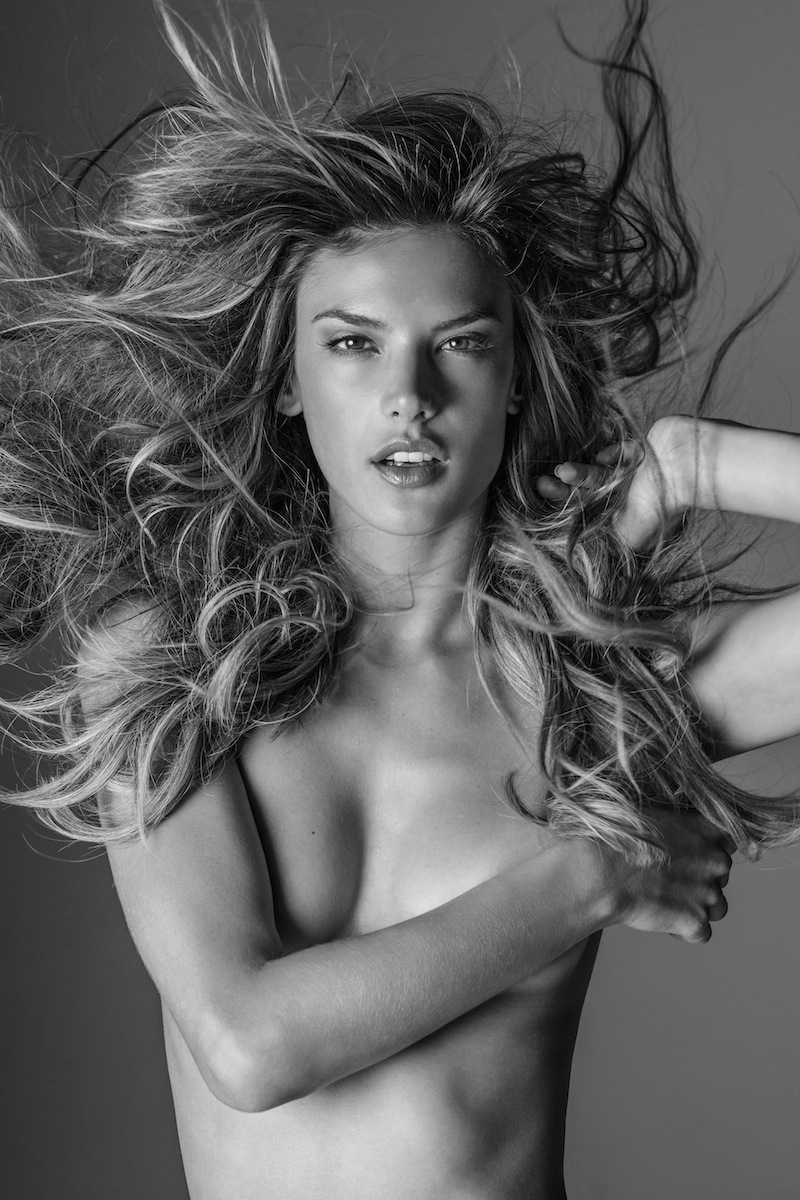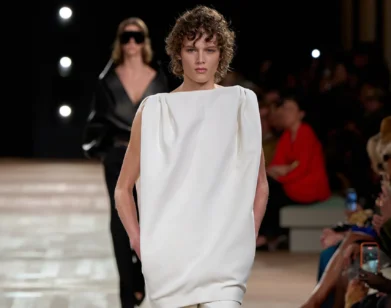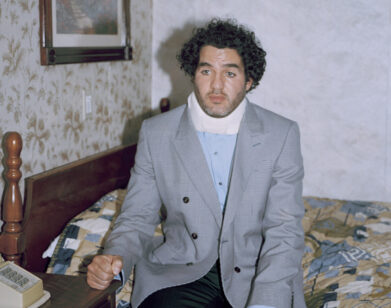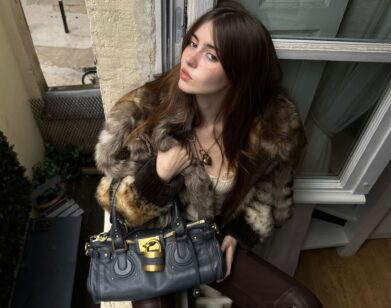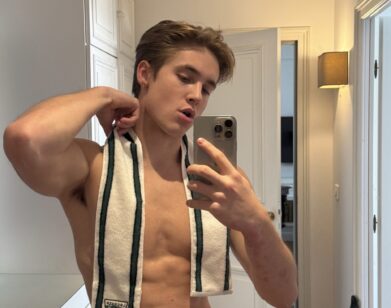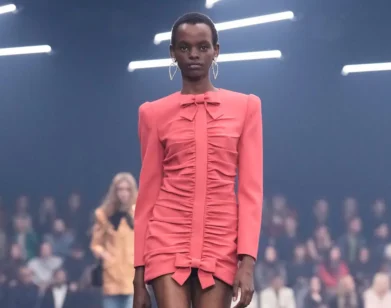Exclusive Preview and Interview: ‘Russell James – Angels’
“I could ramble on forever, I just love photography,” says Russell James with a laugh. “It’s my passion, it drives my family crazy. I live it and breathe it.”
The Western Australian-born James is, of course, an internationally known photographer whose work for Victoria’s Secret, Vogue and W has quickly propelled him to international recognition for his intimate, provocative, and unique photographic style and perspective. A James photo has easily become synonymous with celebrating the wonders of femininity, as well as capturing iconic and sensual representations of a woman’s natural beauty. Photographing some of the most beautiful women in the world— including Gisele Bündchen, Miranda Kerr, Behati Prinsloo, and Alessandra Ambrosio—is just a normal day at the office.
However, James’ work through his fine art project, Nomad Two Worlds, has garnished him another title: social entrepreneur. Launched in 2009 and inspired by the seemingly recurrent global consequences and cultural collisions throughout our world, Nomad has become a virtuoso example of harmonious intercultural collaboration and reconciliation. What started out as a modest collaborative art project quickly transformed into an international art, music, film, and even e-commerce platform (selling a range of items from t-shirts to scarves to handbags), with James creating copious opportunities for economic development and growth for marginalized communities across the world, all while forging lasting partnerships with Aboriginal, Native American, and Haitian artisans.
Interview recently caught up with James when he was in the Hamptons—as he jokes about his location, “a photographer cliché.” A new book dedicated to his growing oeuvre will be released in October, aptly titled Angels ($199, teNeues) after his 15 years photographing for Victoria’s Secret. We’re also pleased to share exclusive photos from the book, which can be viewed in the above slideshow.
DEVON IVIE: When did you first pick up a camera and start your career in photography?
RUSSELL JAMES: I was very late in that regard; I still wanted to figure out what I wanted to do when I grew up. I didn’t pick up a camera until the very late ’80s, at about 29 years of age. I was living on a boat in Sweden. I had some contacts of different photographers—at one point I was literally in a darkroom with a photographer developing some film, a really great photographer, and I just at one point was like, wow, this is really, really good. That’s where I got my real passion and realized that I wanted to do it, no matter what. I became obsessive and put myself through a very aggressive process during those years.
IVIE: What inspires you when you photograph?
JAMES: I grew up in Western Australia, and I have a lot of experience with remote areas and wild landscapes, which I previously took for granted. Also, different cultures and all types of people that are around me. I’m obviously very inspired by cultures and nature and landscapes. In 1996, when I tried to actually get an agent, and when an agent was entertained by the idea of representing me as a photographer, the biggest problem I had for years was that I’d show a photograph of a landscape in North Africa, or a nude of a woman, and they would say, “What do you what to be?” I’d say, “A photographer.” And they’re like, “Yes, but beauty or fashion?” And I’d again say, “I’m a photographer!” I’m inspired by lines, by shapes, when I see a dress on a person, when I see a beauty in a face, whether it’s a man from an ancient culture or a beautiful young model. So what inspires me? Life inspires me.
IVIE: You obviously travel a lot for your shoots. Do you have a favorite or memorable location that you seem to keep returning to?
JAMES: I would say a fairly unbeatable, must-see place in your life is a place called the Kimberley range in the northwest of Australia, which is a very remote but special part of the world. If you’ve never been to the west coast of Sweden in the archipelago in the springtime, it’s unbeatable. I live in Woodstock, and I go to the Catskill Mountains in the fall, and I think there can’t be any place more beautiful than that. I just came back from Citadelle Laferrière in Haiti, and looking at those incredible clouds covering the mountains and the view… it was a spectacular place. Spain, Italy, the Balearic Islands, too—I can go on and on and on about this. [laughs] I think a lot of it has to deal with the time that you’re there, because a lot of places have a “perfect time,” and that has more to do with it.
IVIE: Branching into Nomad Two Worlds, how exactly did this project come about?
JAMES: The short evolution is that there became a time in the very late ’90s when I started to maintain a reputation as a photographer. I was often asked to be involved with charities and fundraisers, and through this I asked myself, “What am I really passionate about?” It was my own conflict that I experienced in northwest Australia. The conflict was that I saw a beautiful and amazing aboriginal culture, but I also saw major social problems, what we called “aboriginal reservations.” I saw terrible interaction between indigenous and non-indigenous Australians. I think anyone living in that period would see it almost like apartheid conditions. That really bugged me.
Nomads Two Worlds at first became my own photographic study to try to understand this incredible indigenous culture thousands of years in the making, and the period of conflict that we’re in, but also the marginalization. So it became a study of what was the past and what was so incredible about it, and what can we do better now. It started as a philanthropic endeavor and an art expression, but now it’s all about the collaborative future. I started to collaborate with indigenous artists around the world in Australia and Haiti and Native American communities. People like Hugh Jackman, Richard Branson, and Hillary Clinton became wonderful supporters. A philanthropic endeavor has a major role to play; however, there’s something even greater surrounding it, which is partnership. We now work with an incredible amount of people, we source traditional funding and we literally develop products. We work with indigenous communities to find them sustainable ingredients, and then we brand it with their story—these people are part of the business. As a proper mission, from the time we started, it was sort of frowned upon by the philanthropic community. They said, “Well, you’re either one or the other. Either you’re commercial or you’re philanthropic.” There was a socially conscious piece in the middle that was missing. That’s now become mainstream, and it’s really encouraging. We recognize how business is going to be better if we are inclusive to marginalized communities, because the world is really starting to wake up to all of those things. Everyone wants to know what they’re using, what they’re buying, what they’re wearing. We have something that has raw spirit—it’s real. You don’t have to worry as to how it’s produced.
IVIE: How do you see Nomad Two Words evolving in these next few years?
JAMES: It has evolved its way into a socially conscious business with momentous momentum. Our fragrance line has just launched, and we have other products with major distributors in discussion. We want to tell the story of this conflict that I’ve spoken about, and how we can do something in the future, with a very positive attitude. I think we’ll evolve primarily through product, and breathing and keeping true to who we are, with that mantra and spirit with the products leading the way.
IVIE: You’re obviously well known for nude and semi-nude portraiture. What do you think is particularly special about photographing someone nude that cannot to achieved through any other type of photograph?
JAMES: It was a very unusual journey to get me there. Photographing people nude was one category of my photography, as I don’t distinguish between the nude and the beautiful landscape, as bizarre as that sounds. They’re both inspiring and beautiful in different ways. However, I always felt that if you’re shooting a nude for a “guys’ magazine”—to put it bluntly—you can pretty much look the other way and get still a shot with a camera. But the truth of it is, and what matters to me the most, is that my whole career has been shooting women’s brands for Victoria’s Secret or Donna Karan or companies like that who are marketing to women and not men. So, when I’m photographing a nude, I think, “How this can appeal to women?” and, “How it’s going to be appealing to the woman in the photograph?” It’s a chance to be personal with someone. When I’m taking a nude photograph, I never say, “Oh my god, you’re so sexy.” I try to stray completely away from that. I’m looking for the subject to relax to the point when they’re really looking at the camera, being very honest and real. The ultimate test of the photo for is when after we shoot and we get the prints, and the subjects say, “I’m so flattered, I feel so beautiful,” and can feel the same in 10 years.
IVIE: You’ve also done quite a few projects as a director, such as the short films Sardinia (2005) and The Apology (2009), as well as commercial work. When did you become interested in film?
JAMES: It was really the frustration of shooting editorial stories where you only had eight or 10 pages to tell a story. It happened to me around 1999 or 2000—Canon came to me with a new digital camera, showed me the camera, and asked me if I would test it. It weighed a ton, cost them $30,000, and said they wanted to do digital photography. At the moment when I took that image, that led to the film part of it. I was telling my clients about digital and was quite instrumental in Victoria’s Secret going all digital. I lived through being pooh-poohed by fine art galleries, saying, “Digital is going to destroy the meaning behind photos.” The motion side, the moment all of the cameras come alive with that motion, it was like a dream come true. It enables people to economically experiment with film. At the time I realized one of two things was going to happen. Either digital would evolve so much that film and TV directors would ultimately be shooting with them and people would just print them out and photography would then fade away. Or, people can also realize that film is about framing and composition, like Tim Burton—he’s so deliberative with frames. So it’s almost like photographers don’t know that they have this great skill set for film. I realized I could enable that. Right now I’m working on a documentary on behalf of President Clinton’s foundation and Richard Branson’s foundation.
IVIE: Do you find any similar traits or characteristics that you can bring to both the photographer’s chair and the director’s chair?
JAMES: Composition. As a photographer, you’re sort of doing everything—you’re directing the lights and you’re framing and you’re moving around. The hardest thing to learn as a director is how cameras have to move. You have to have patience, you have to learn how to look through the lens and then you have to learn to combine all of the compartments into one great image. And you have to concentrate on the framing.
IVIE: To you, what makes a particular photograph “good?”
JAMES: When I’m editing, it’s such a tough call, and I get challenged on it all the time. You’ve got to go with your gut—sometimes when you look at a photograph, you just know it’s the shot. Sometimes it’s about the connection, or about the simplicity of the composition. Complicated things for me tend not to be interesting. Simple things, like when it’s really direct eye contact, or when you see a really beautiful shape, like when it’s clean or well balanced in the frame. When it comes to landscapes and all the other genres, it’s really a tough call. If you give the same 200 frames to 200 different people, they’ll all probably pick a different frame. The key is editing. Be intuitive enough to be shooting at the right moment, and when you’re seeing the action happening just as you want it, shoot. And in the edit you have to go with your gut.
RUSSELL JAMES – ANGELS IS OUT OCTOBER 15 (TENEUES). FOR MORE ON THE ARTIST AND TO PREORDER THE BOOK, PLEASE VISIT HIS WEBSITE.

